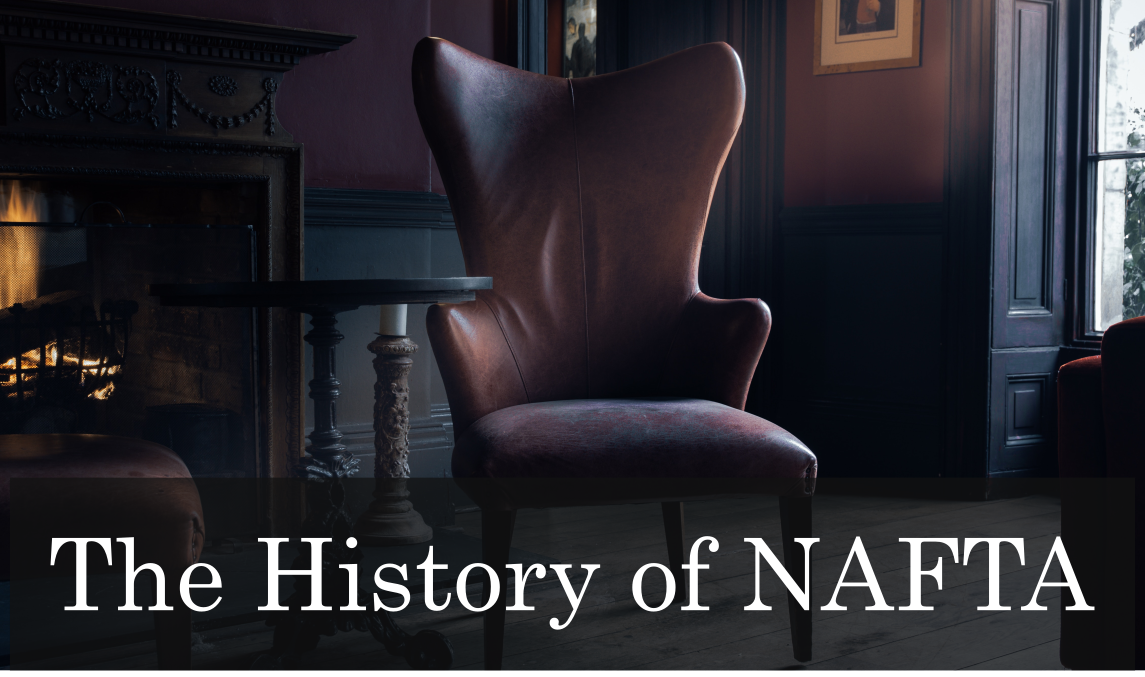NAFTA is the largest free trade agreement in the world. It has changed how the United States conducts trade with Canada and Mexico.
The North American Free Trade Agreement (NAFTA) is an agreement which established the world’s largest free trade zone in terms of GDP. The trade agreement includes all three countries from North America, the United States, Canada, and Mexico. Overall, the agreement has been very successful, allowing the countries to invest in each other’s economies and individually succeed in the global marketplace.
Why Was NAFTA Established?
In 1980 when President Ronald Regan was elected, the European Common Market had already been created. Regan ran his campaign promising to create a similar agreement to the trade agreement which laid the foundation for the European Union.
At the same time, Mexico was in the heat of the Latin American debt crisis, and their debt to foreign countries exceeded their earning power.
The purposes of the NAFTA agreement are outlined in article 102. These 7 purposes detail what NAFTA is intended to do:
- Grant the signatories most-favored-nation
- Eliminate barriers to trade and facilitate the cross-border movement of goods and services.
- Promote conditions of fair competition.
- Increase investment opportunities.
- Provide protection and enforcement of intellectual property rights.
- Create procedures for the resolution of trade disputes.
- Establish a framework for further trilateral, regional, and multilateral cooperation to expand the trade agreement’s benefits.
What NAFTA Means for Free Trade
The free trade agreement was created to accomplish the goals outlined above. When the agreement was signed, a considerable amount of the tariffs the three countries had against each other were dropped and a 15-year plan was created to eliminate all tariffs.
What Events Led to the Creation of NAFTA
NAFTA took over a decade and 3 U.S. Presidents to finally be signed into effect. The timeline details the steps of negotiations which took place to create NAFTA:
- 1980: Ronald Regan was elected with the intention of creating a free trade agreement
- 1986: Canadian Prime Minister Mulroney and President Regan began negotiations for a free trade agreement.
- 1988: An agreement was signed between the U.S. and Canada.
- 1989: The agreement between the U.S. and Canada went into effect on January 1 This stayed in effect until NAFTA was signed.
- 1990: Mexican President Carlos Salinas de Gortari requested to create a free trade agreement with the United States.
- Current President George H.W. Bush began negotiations for a trade agreement between the two countries. A trade agreement between Mexico and the U.S. would lower Mexican tariffs on U.S. imports which were considerably higher than US tariffs on Mexican imports.
- Canada then joined the discussion for a three-way agreement.
- 1992: NAFTA was signed by President Bush and his two counterparts.
- 1993: President Bill Clinton signed the agreement into law.
- 1994: On January 1, NAFTA entered full force.
Additional Provisions After Signing
Two important provisions were added to NAFTA after it was signed in. The NAALC (North American Agreement on Labor) was established to oversee and ensure standards of labor laws were being met.
NAAEC (North American on Environmental Cooperation) was created to establish sustainable environmental policies across the three countries.
The overall benefit of the United States GDP from NAFTA is under debate. However, Mexico and Canada are the 2nd and 3rd largest exporters to the United States and NAFTA has increased overall trade to over $1 trillion.






![[Webinar] How Could Changes to De Minimis Impact Your Company?](https://traderiskguaranty.com/trgpeak/wp-content/uploads/2025/05/trg-how-de-minimis-impacts-customs-bond-webinar-400x250.png)
![[Webinar] United States Reciprocal Tariffs – The What, Why, and How](https://traderiskguaranty.com/trgpeak/wp-content/uploads/2025/04/trg-webinar-reciprocal-tariffs-400x250.png)